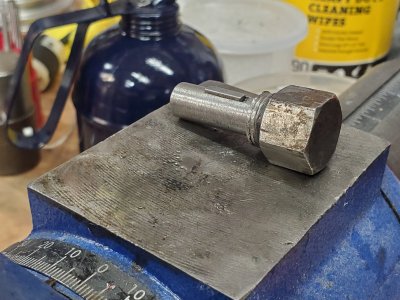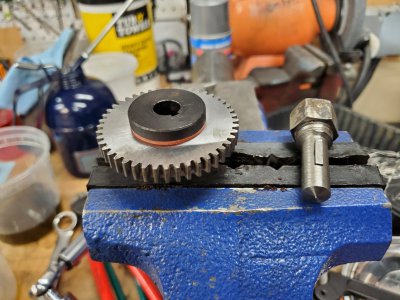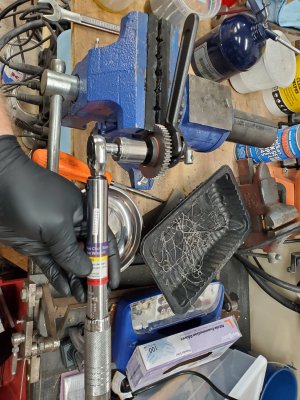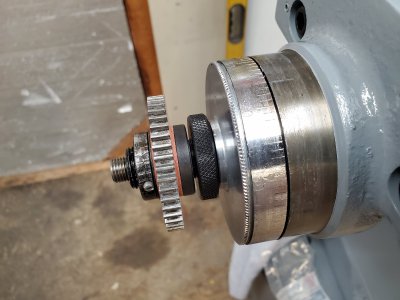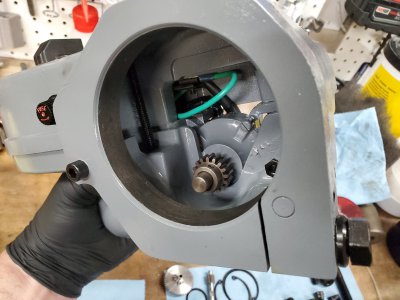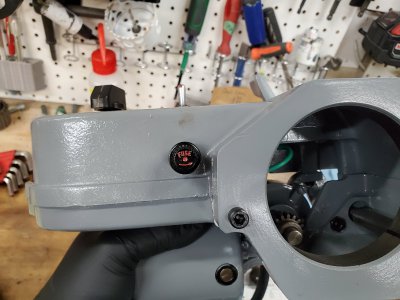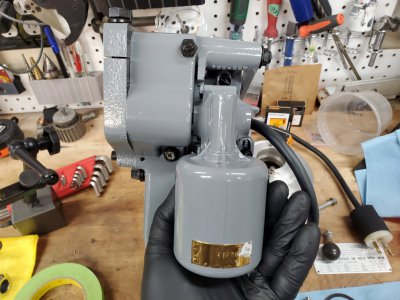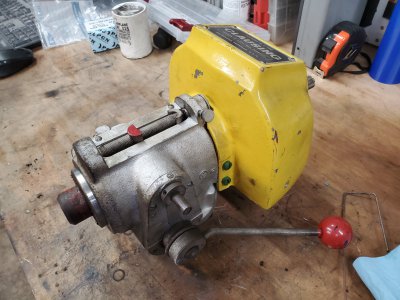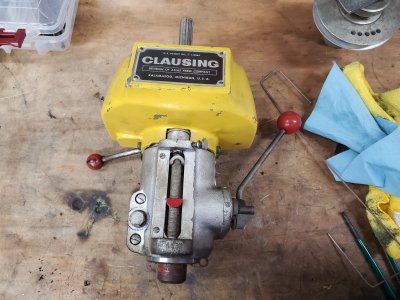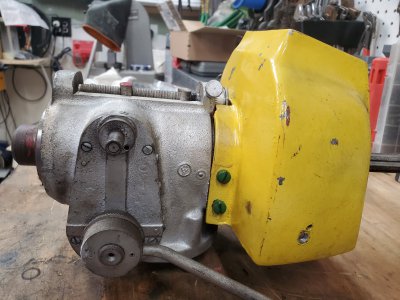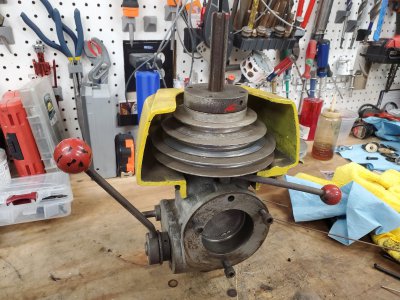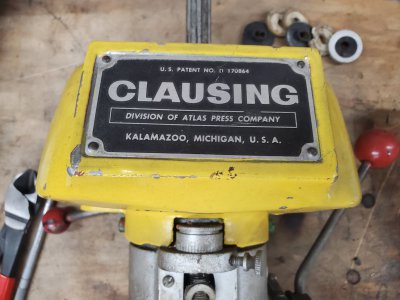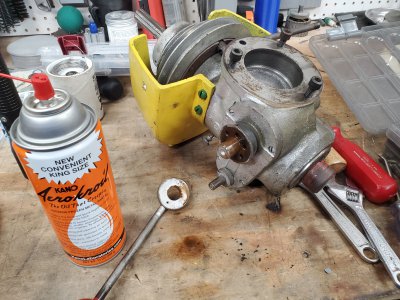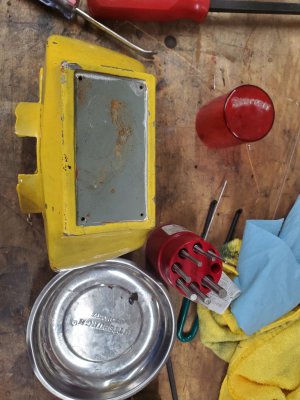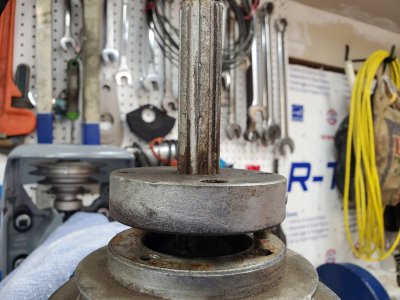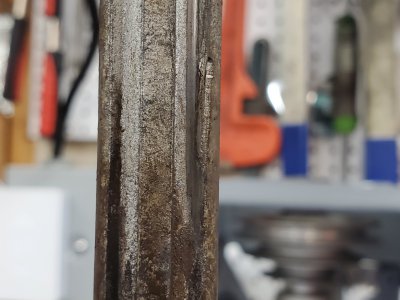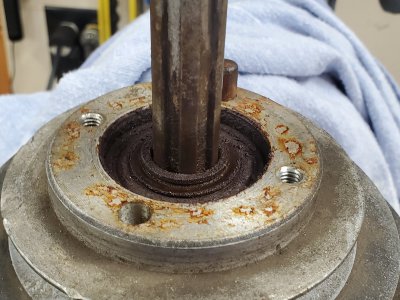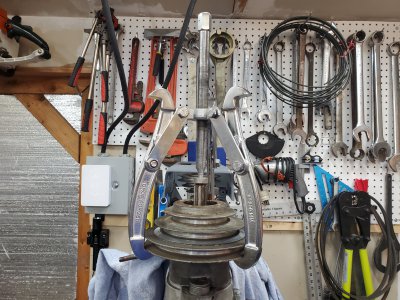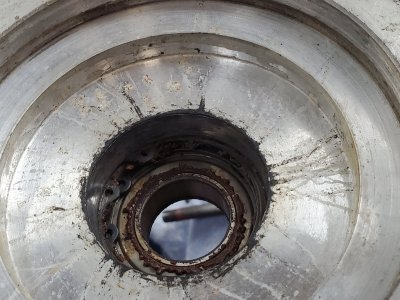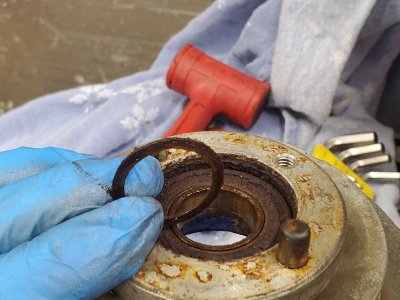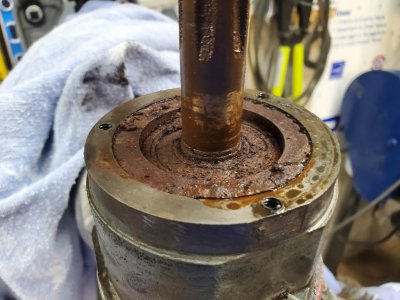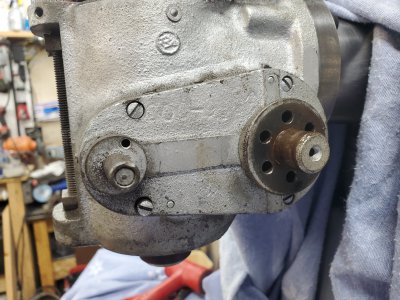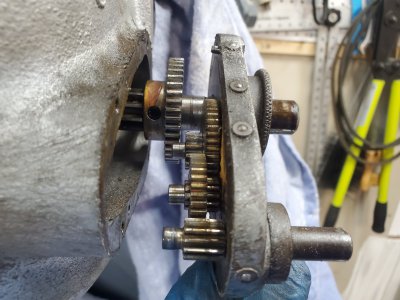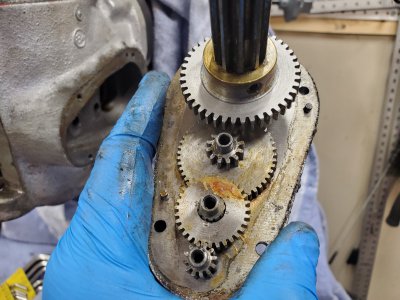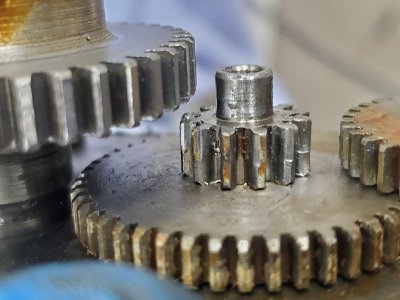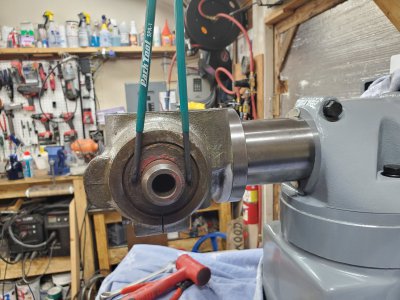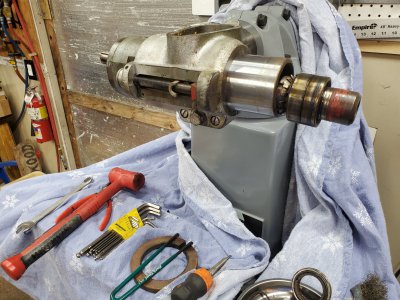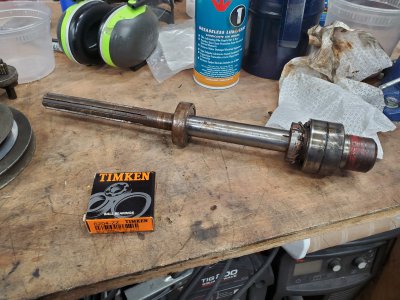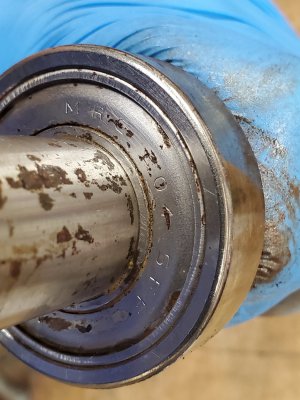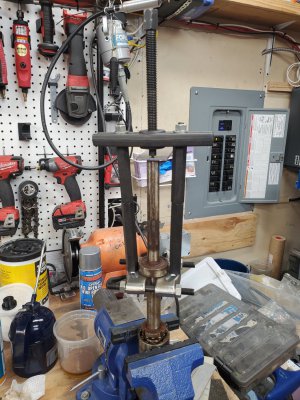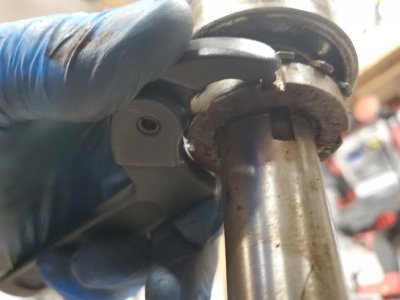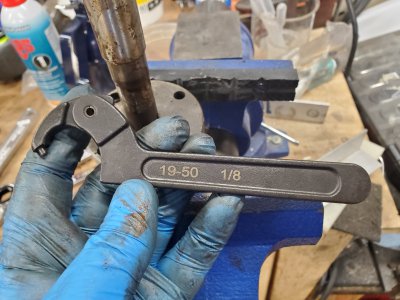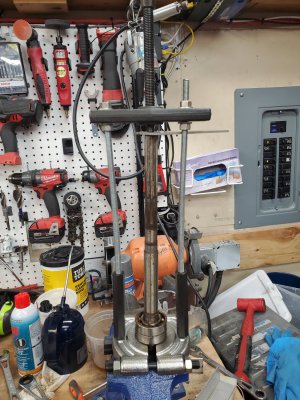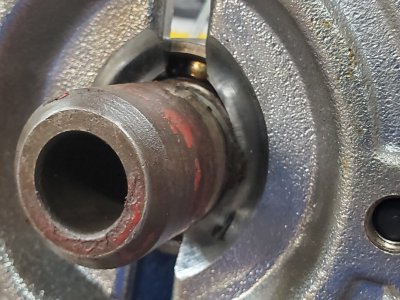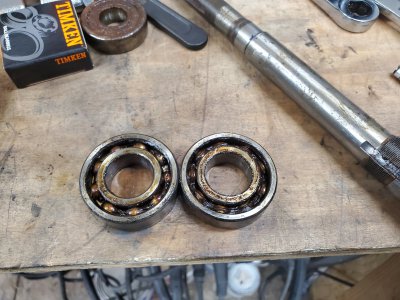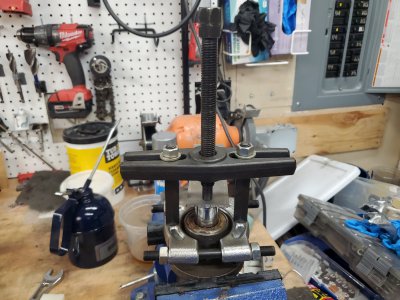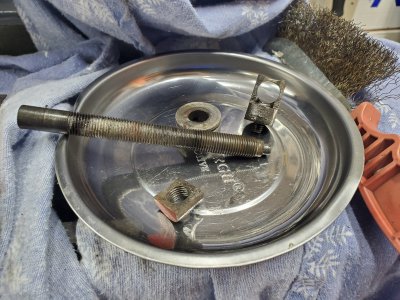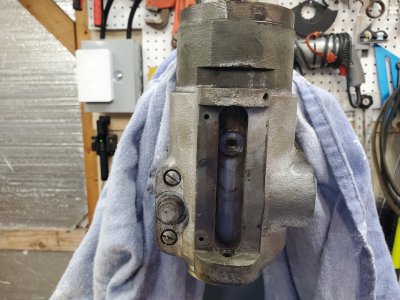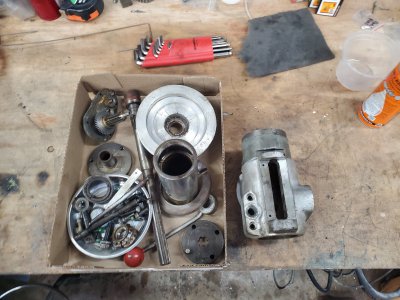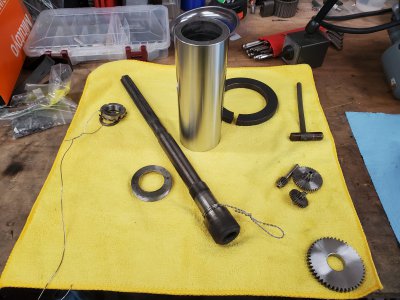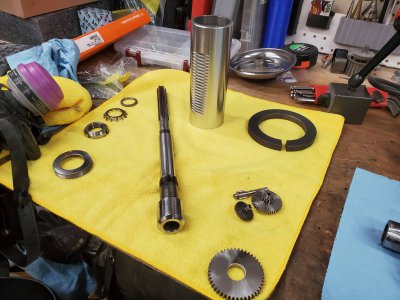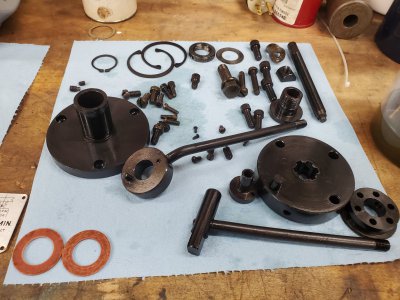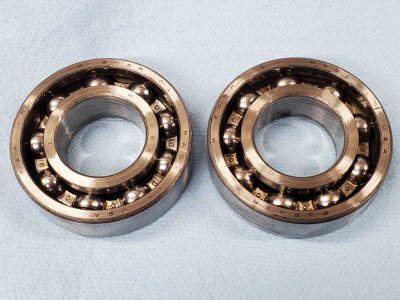- Joined
- Oct 6, 2018
- Messages
- 45
Looking great! Hey find out how to weld steel to an aluminum hand knob, will you?
Thanks! I think it's a steel nut brazed to the aluminum knob using SMAW process. I thought the knob was steel till I put it in the caustic bluing tank. That got exciting real quick! The tank started to bubble like crazy, it looked like it was going to boil over, I knew something was wrong immediately. I took a few steps back to assess the situation. Decided to unplugged the burner, but that didnt help. The bubbles kept increasing, then finally it dawned on me to pull the part out of the tank. It was probably only in there about one minute and there's a ton of pitting where the caustic solution was violently attacking the aluminum. No photos before paint, but the pitting is still apparent despite my heavy handed paint job. I'm pretty sure that nut is going to snap off of there as soon as any torque is applied, the brazing is undercut pretty bad where the aluminum dissolved out from under it.
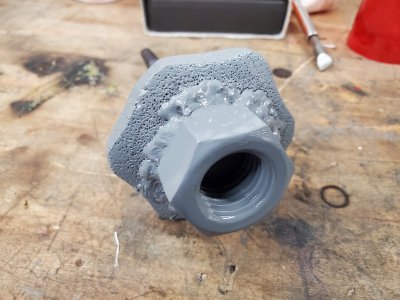
I think that plate is gonna be a ***** to remove the red paint and preserve the underlying paint. You could order a replica? Someone here posted a resource. I wonder if thermal cycling could flake off the red?
I'd love to know about the source for replica plates, I've got a few machines that could use new plates. I have thought about how to make my own replica plates. When the original plate isn't covered in paint, I could scan it or take a photo, use that as a guide for creating new graphics, and print them on a clear sticker using my Laserjet printer. Then it would just be a matter of whipping up a little aluminum plate and slapping the sticker on there. It's been a while since I used Photoshop or illustrator but I could figure it out.
Anyhow, I did manage to get the spindle speeds plate clean today! I gave it a ~1min bath in the ultrasonic cleaner full of hot Simple Green Extreme, this softened the red paint, then I scraped it off with a plastic razor blade. It took a few cycles of this, but eventually the paint came off. I'm pretty surprised it came out as well as it did.
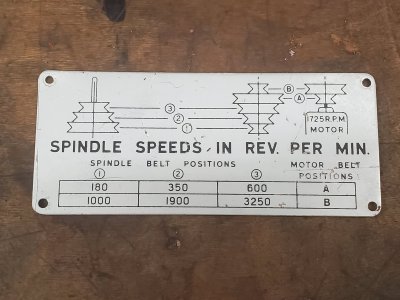
I'm planning on running a batch of parts through the bluing tank tomorrow so I'll toss in the drive screws for the nameplate, then get it mounted back on the belt guard.


